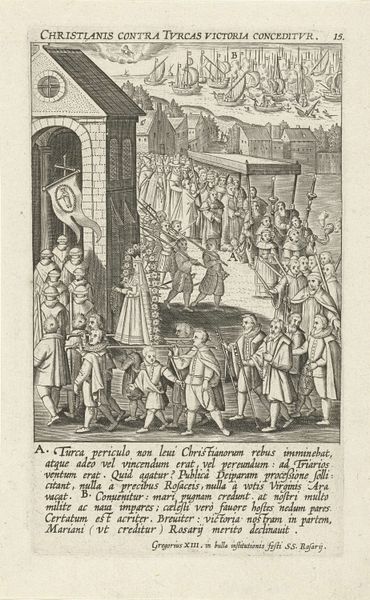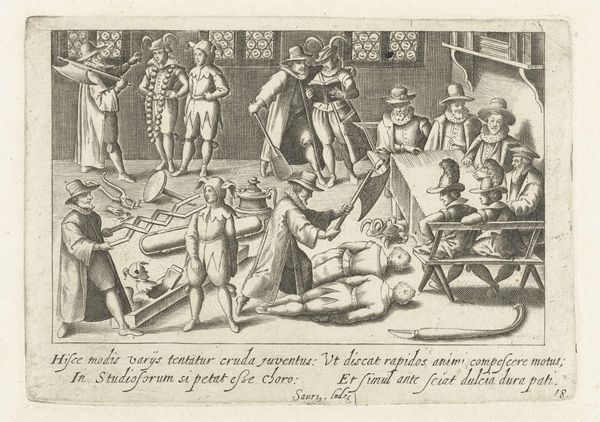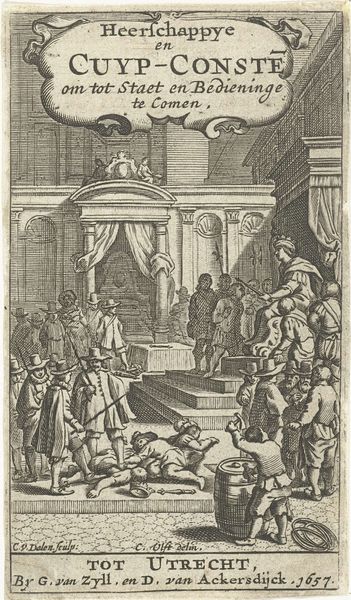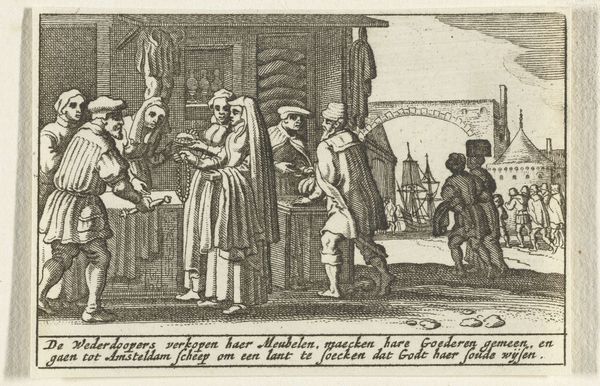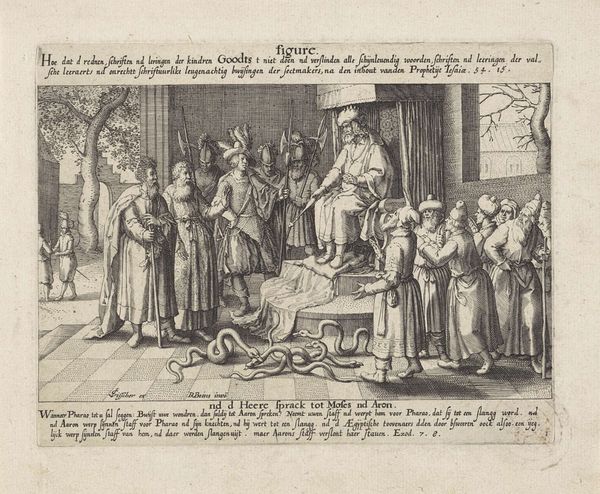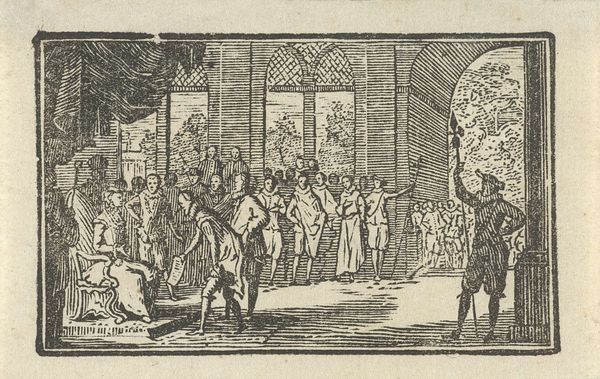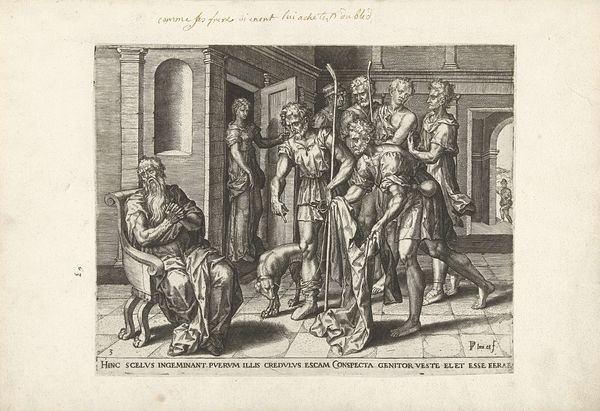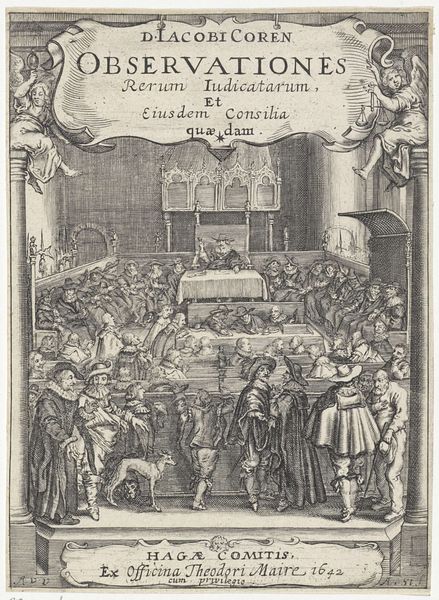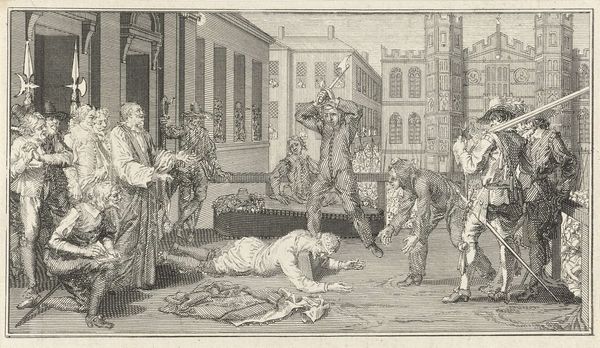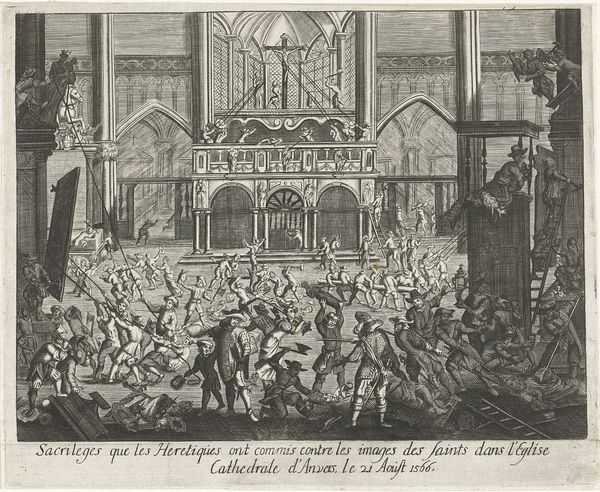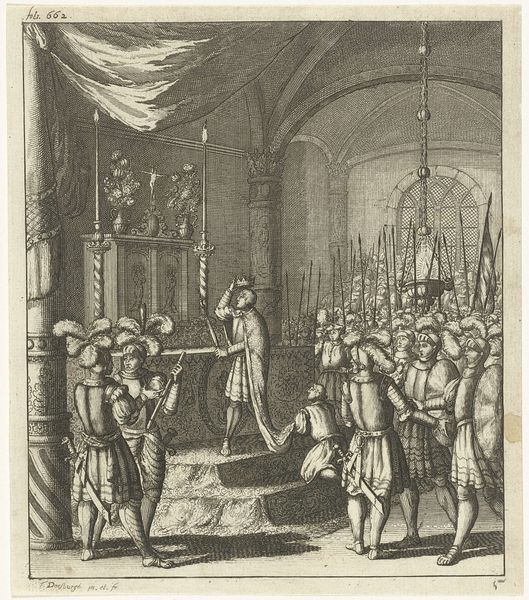
Terechtstelling van de wederdopers op het schavot op de Dam, 1535 1629 - 1652
0:00
0:00
pieterhendrickszschut
Rijksmuseum
print, engraving
# print
#
pen illustration
#
old engraving style
#
figuration
#
line
#
cityscape
#
genre-painting
#
history-painting
#
engraving
Dimensions: height 67 mm, width 98 mm
Copyright: Rijks Museum: Open Domain
Pieter Hendricksz. Schut made this print of the execution of Anabaptists on Dam Square in 1535, likely with an etching technique on a metal plate, such as copper or iron. The material quality of this print, with its fine, etched lines, allows for a detailed depiction of the grim scene. Look closely, and you’ll see the texture that defines the architecture, the crowd’s garments, and the bodies of the executed. The lines convey the somber mood, the weight of the event, and the rough texture of the scaffold. The technique enabled Schut to convey a sense of depth, and to capture the emotional intensity of the moment, making it a powerful statement. Prints like this were made as propaganda, and were relatively inexpensive to produce. They thus represent an intersection of craft production and political messaging. So, considering the materials and techniques involved in this printmaking, we begin to understand the complex interplay between art, society, and political power.
Comments
No comments
Be the first to comment and join the conversation on the ultimate creative platform.



